Abstract
The effect of circulatory occlusion upon the glycogen phosphorylase-synthetase system in intact human muscle at rest has been investigated using the needle biopsy technique. The fraction of phosphorylase in the a form was 26% before occlusion and decreased to 9% after 40 min of occlusion. Synthetase I activity was unchanged during occlusion. After 40 min of occlusion the content of phosphocreatine was decreased by 40%, with a corresponding increase in creatine and inorganic phosphate (Pi). The observed glycogenolytic rate increased during occlusion up to 0.8 mmol glycosyl units kg-1 dry muscle min-1. An intracellular Pi concentration at rest of 2.0 mmol l-1 was calculated from the activities of phosphorylase a and synthetase I assuming that under these conditions they are equal. It is concluded that the glycogenolytic rate during occlusion is a function of both the fraction of phosphorylase in the a form and the availability of Pi at the active site of the enzyme.
Full text
PDF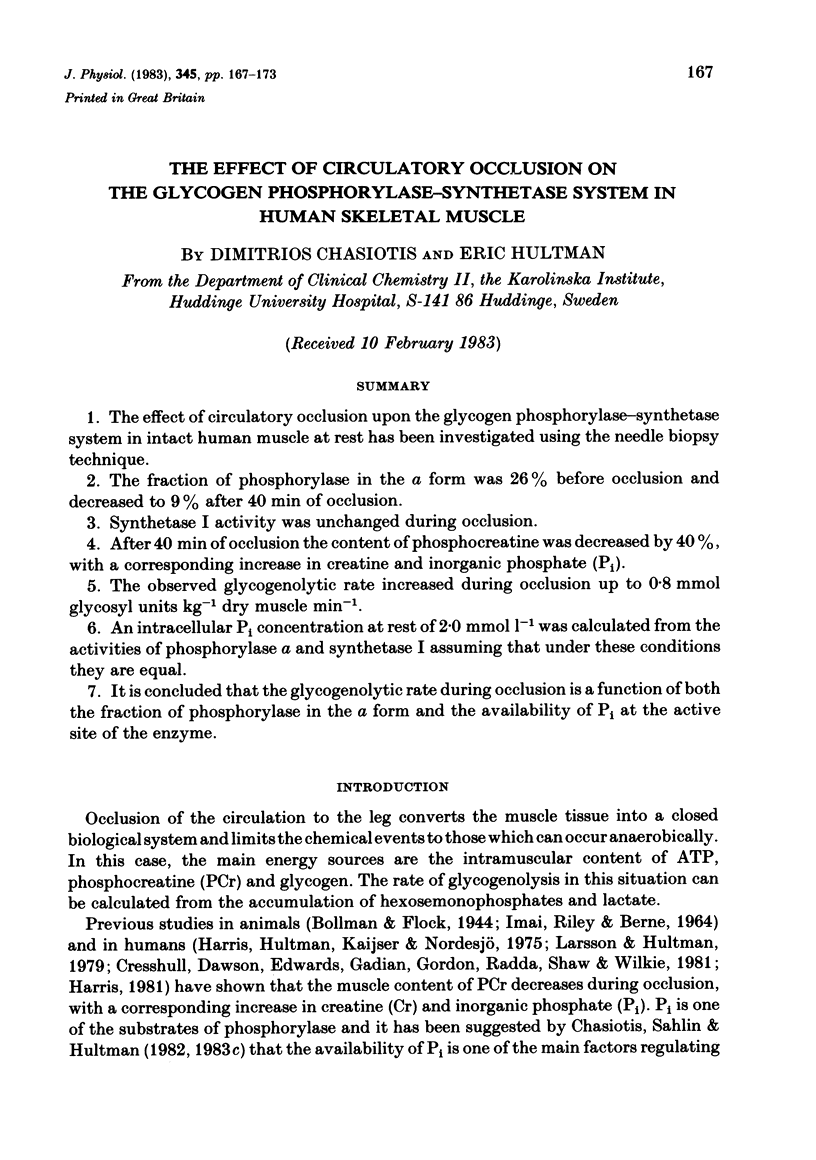
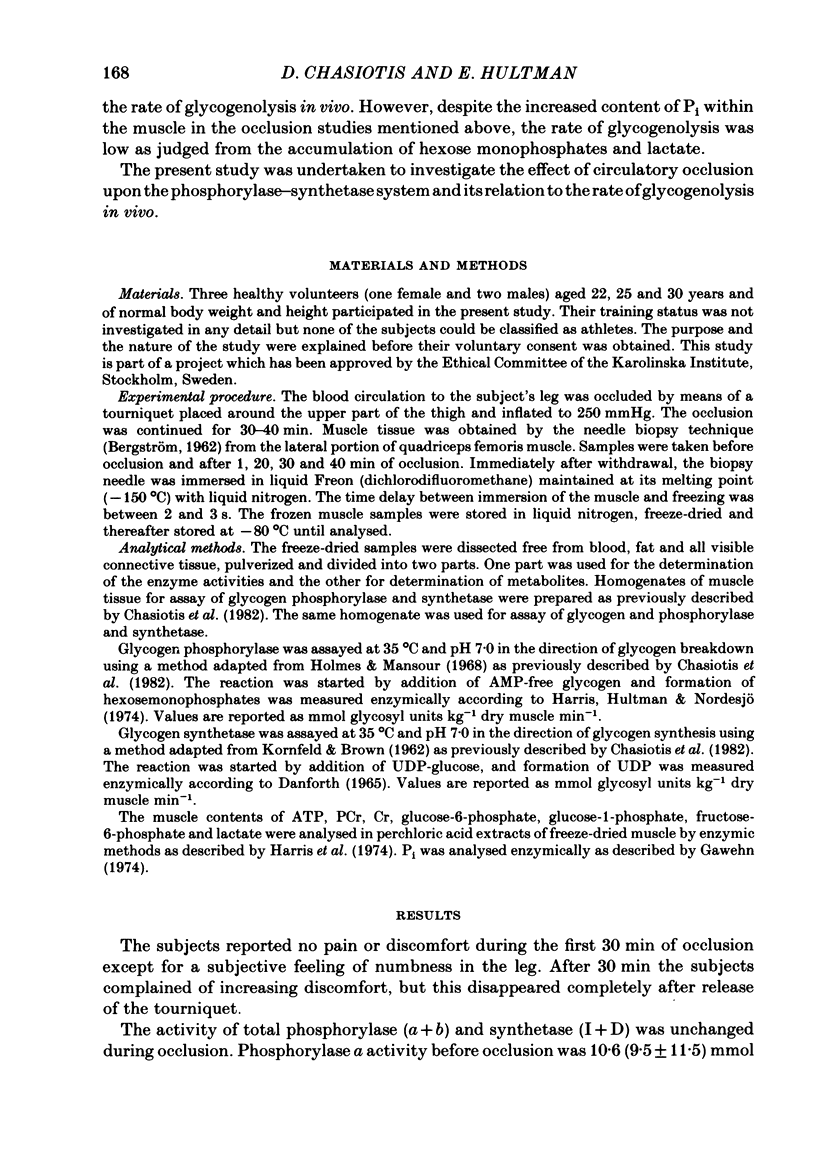
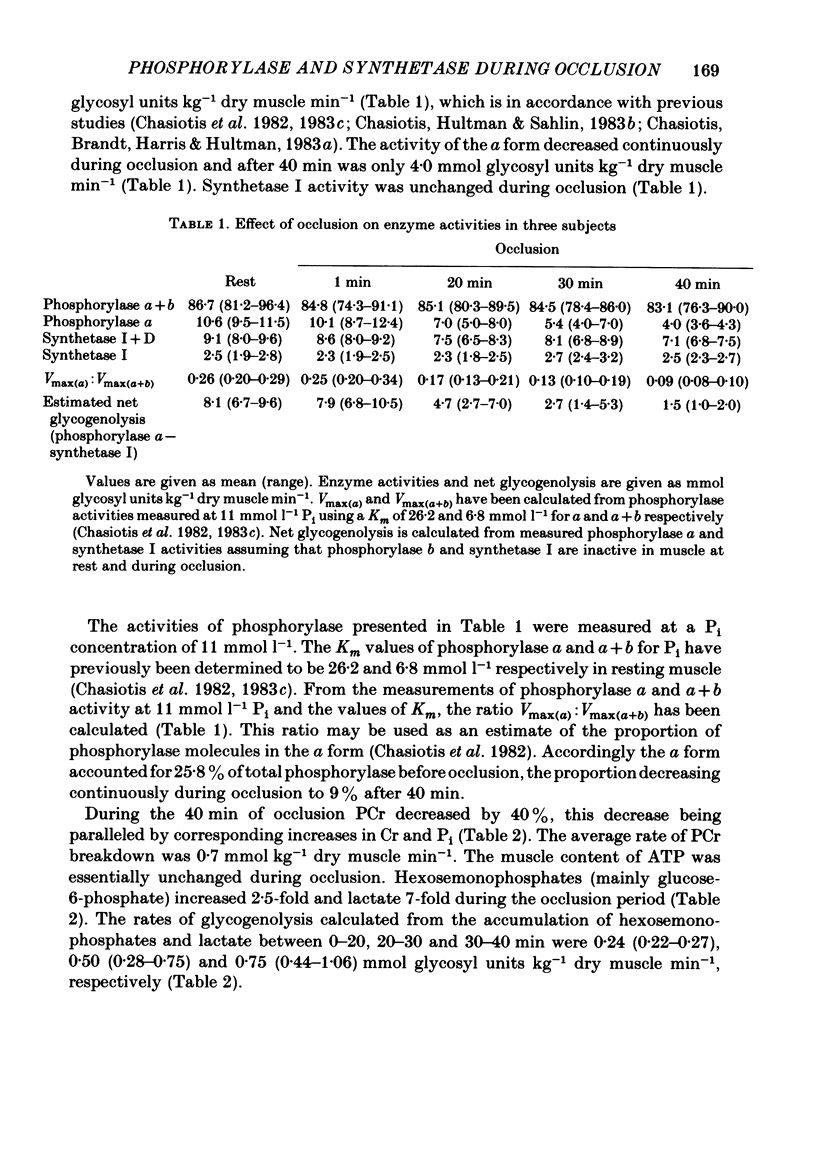
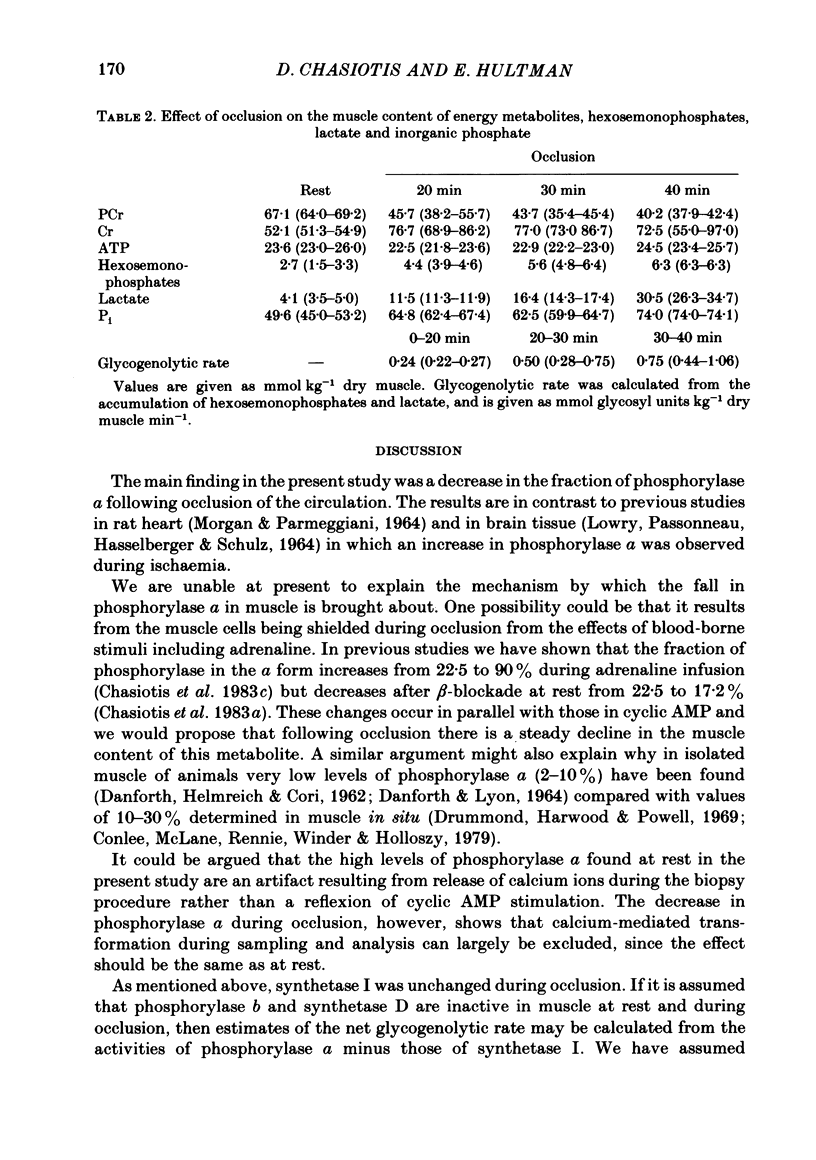
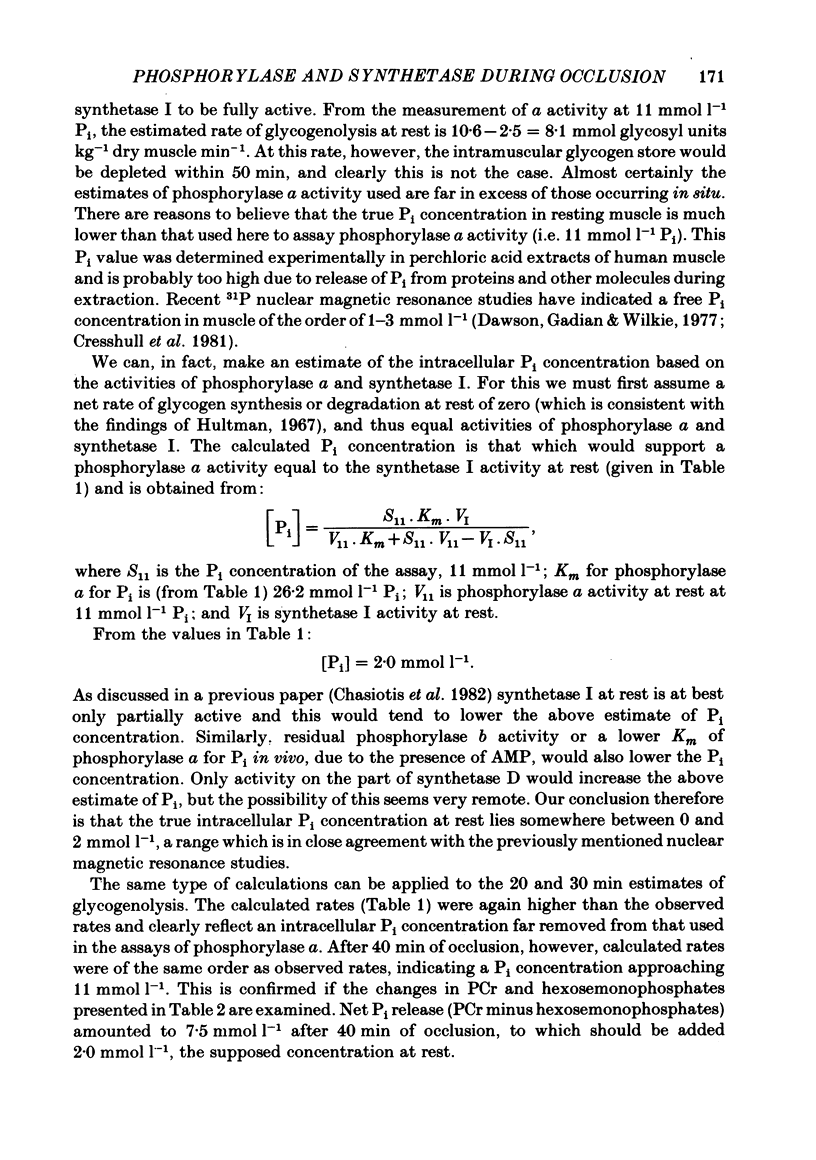
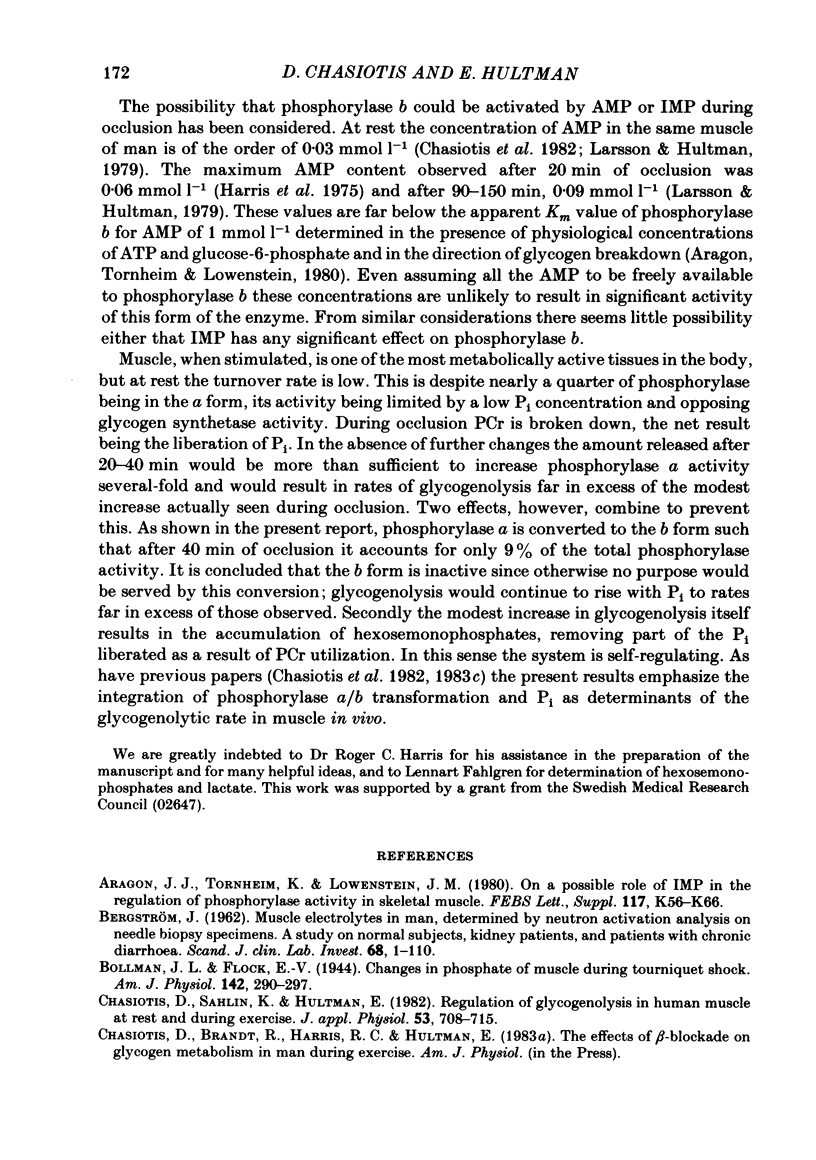
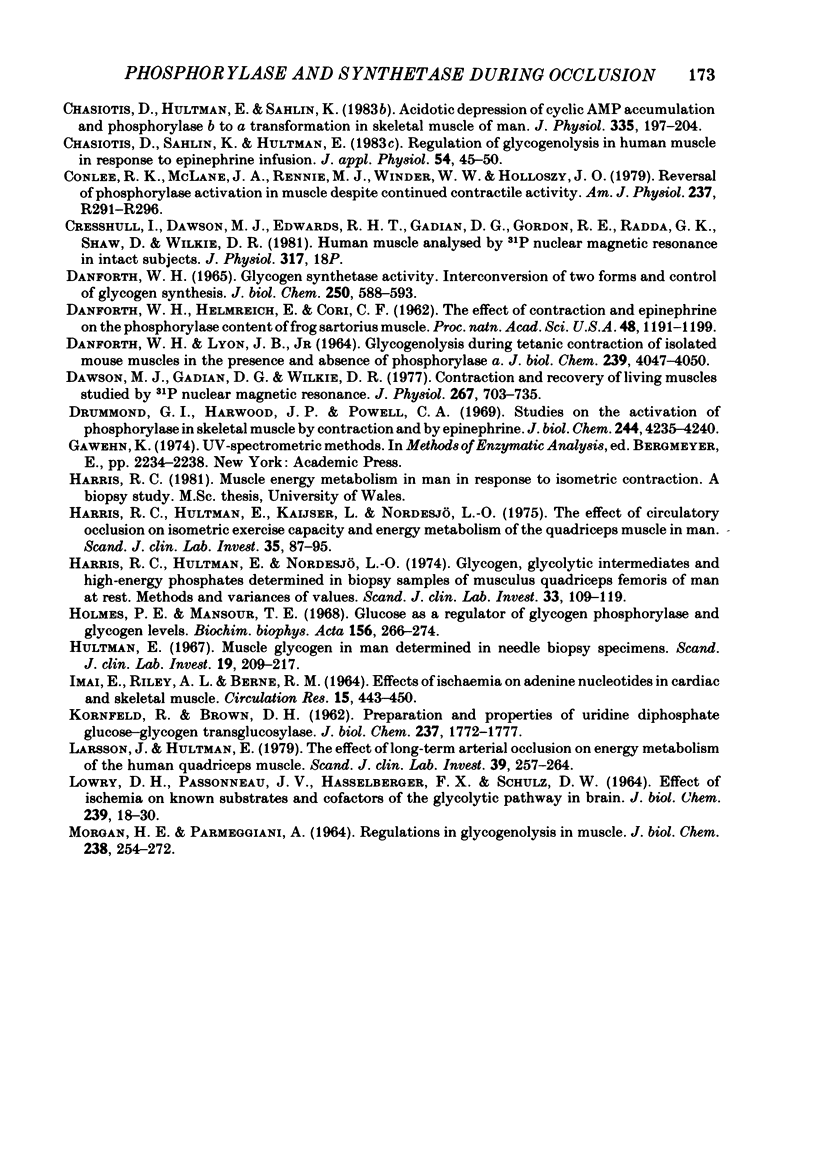
Selected References
These references are in PubMed. This may not be the complete list of references from this article.
- Chasiotis D., Hultman E., Sahlin K. Acidotic depression of cyclic AMP accumulation and phosphorylase b to a transformation in skeletal muscle of man. J Physiol. 1983 Feb;335:197–204. doi: 10.1113/jphysiol.1983.sp014528. [DOI] [PMC free article] [PubMed] [Google Scholar]
- Chasiotis D., Sahlin K., Hultman E. Regulation of glycogenolysis in human muscle at rest and during exercise. J Appl Physiol Respir Environ Exerc Physiol. 1982 Sep;53(3):708–715. doi: 10.1152/jappl.1982.53.3.708. [DOI] [PubMed] [Google Scholar]
- Chasiotis D., Sahlin K., Hultman E. Regulation of glycogenolysis in human muscle in response to epinephrine infusion. J Appl Physiol Respir Environ Exerc Physiol. 1983 Jan;54(1):45–50. doi: 10.1152/jappl.1983.54.1.45. [DOI] [PubMed] [Google Scholar]
- Conlee R. K., McLane J. A., Rennie M. J., Winder W. W., Holloszy J. O. Reversal of phosphorylase activation in muscle despite continued contractile activity. Am J Physiol. 1979 Nov;237(5):R291–R296. doi: 10.1152/ajpregu.1979.237.5.R291. [DOI] [PubMed] [Google Scholar]
- DANFORTH W. H. GLYCOGEN SYNTHETASE ACTIVITY IN SKELETAL MUSCLE. INTERCONVERSION OF TWO FORMS AND CONTROL OF GLYCOGEN SYNTHESIS. J Biol Chem. 1965 Feb;240:588–593. [PubMed] [Google Scholar]
- DANFORTH W. H., HELMREICH E., CORICF The effect of contraction and of epinephrine on the phosphorylase activity of frog sartorius muscle. Proc Natl Acad Sci U S A. 1962 Jul 15;48:1191–1199. doi: 10.1073/pnas.48.7.1191. [DOI] [PMC free article] [PubMed] [Google Scholar]
- DANFORTH W. H., LYON J. B., Jr GLYCOGENOLYSIS DURING TETANIC CONTRACTION OF ISOLATED MOUSE MUSCLES IN THE PRESENCE AND ABSENCE OF PHOSPHORYLASE A. J Biol Chem. 1964 Dec;239:4047–4050. [PubMed] [Google Scholar]
- Dawson M. J., Gadian D. G., Wilkie D. R. Contraction and recovery of living muscles studies by 31P nuclear magnetic resonance. J Physiol. 1977 Jun;267(3):703–735. doi: 10.1113/jphysiol.1977.sp011835. [DOI] [PMC free article] [PubMed] [Google Scholar]
- Drummond G. I., Harwood J. P., Powell C. A. Studies on the activation of phosphorylase in skeletal muscle by contraction and by epinephrine. J Biol Chem. 1969 Aug 10;244(15):4235–4240. [PubMed] [Google Scholar]
- Harris R. C., Hultman E., Kaijser L., Nordesjö L. O. The effect of circulatory occlusion on isometric exercise capacity and energy metabolism of the quadriceps muscle in man. Scand J Clin Lab Invest. 1975 Jan;35(1):87–95. [PubMed] [Google Scholar]
- Harris R. C., Hultman E., Nordesjö L. O. Glycogen, glycolytic intermediates and high-energy phosphates determined in biopsy samples of musculus quadriceps femoris of man at rest. Methods and variance of values. Scand J Clin Lab Invest. 1974 Apr;33(2):109–120. [PubMed] [Google Scholar]
- Holmes P. A., Mansour T. E. Glucose as a regulator of glycogen phosphorylase in rat diaphragm. I. Effect of glucose and related compounds on phosphorylase and glycogen levels. Biochim Biophys Acta. 1968 Mar 11;156(2):266–274. doi: 10.1016/0304-4165(68)90255-9. [DOI] [PubMed] [Google Scholar]
- Hultman E. Muscle glycogen in man determined in needle biopsy specimens: method and normal values. Scand J Clin Lab Invest. 1967;19(3):209–217. doi: 10.3109/00365516709090628. [DOI] [PubMed] [Google Scholar]
- IMAI S., RILEY A. L., BERNE R. M. EFFECT OF ISCHEMIA ON ADENINE NUCLEOTIDES IN CARDIAC AND SKELETAL MUSCLE. Circ Res. 1964 Nov;15:443–450. doi: 10.1161/01.res.15.5.443. [DOI] [PubMed] [Google Scholar]
- KORNFELD R., BROWN D. H. Preparation and properties of uridine diphosphate gluose-glycogen transglucosylase. J Biol Chem. 1962 Jun;237:1772–1777. [PubMed] [Google Scholar]
- LOWRY O. H., PASSONNEAU J. V., HASSELBERGER F. X., SCHULZ D. W. EFFECT OF ISCHEMIA ON KNOWN SUBSTRATES AND COFACTORS OF THE GLYCOLYTIC PATHWAY IN BRAIN. J Biol Chem. 1964 Jan;239:18–30. [PubMed] [Google Scholar]
- Larsson J., Hultman E. The effect of long-term arterial occlusion on energy metabolism of the human quadriceps muscle. Scand J Clin Lab Invest. 1979 May;39(3):257–264. doi: 10.1080/00365517909106103. [DOI] [PubMed] [Google Scholar]


